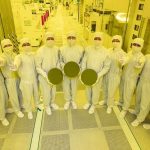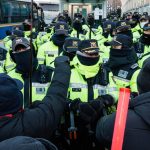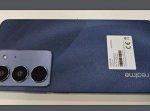From yesterday’s U.S. v. Fortenberry (9th Cir.), in a decision by Judge James Donato (N.D. Cal.) joined by Ninth Circuit Judges Gabriel P. Sanchez and Salvador Mendoza, Jr.:
Federal agents interviewed Jeffrey Fortenberry at his home in Lincoln, Nebraska, and his lawyer’s office in Washington, D.C., in connection with an investigation into illegal campaign contributions made by a foreign national through conduit donors. At the time, Fortenberry was a member of the House of Representatives elected to multiple terms by voters in Nebraska’s 1st congressional district. The federal agents were based in Los Angeles, California, where the illegal contribution activity was said to have occurred. At the end of the investigation, Fortenberry was charged with making false statements during the interviews in violation of 18 U.S.C. § 1001, but not with a violation of the federal election laws. He was tried and convicted by a federal jury in Los Angeles….
The Constitution plainly requires that a criminal defendant be tried in the place where the criminal conduct occurred. The district court determined, and the government urges on appeal, that a Section 1001 violation occurs not only where a false statement is made but also where it has an effect on a federal investigation. We conclude that an effects-based test for venue of a Section 1001 offense has no support in the Constitution, the text of the statute, or historical practice. Consequently, we reverse Fortenberry’s conviction without prejudice to retrial in a proper venue….
“Aware of the unfairness and hardship to which trial in an environment alien to the accused exposes him,” the Framers drafted the Venue Clause, which “mandates that the ‘Trial of all Crimes … shall be held in the State where the … Crimes shall have been committed.'” This command is reinforced by the Vicinage Clause of the Sixth Amendment, which “guarantees ‘the right to … an impartial jury of the State and district wherein the crime shall have been committed.'”
Congress did not expressly designate the venue of a Section 1001 offense, and so the “locus delicti,” the location of the crime, “must be determined from the nature of the crime alleged and the location of the act or acts constituting it.” “To determine the nature of the crime, we look to the essential conduct elements of the offense.”
Section 1001 of Title 18 imposes criminal liability on “whoever, in any matter within the jurisdiction of the executive, legislative, or judicial branch of the Government of the United States, knowingly and willfully … (1) falsifies, conceals, or covers up by any trick, scheme, or device a material fact” or “(2) makes any materially false, fictitious, or fraudulent statement or representation.” “A conviction under § 1001 requires the government to prove beyond a reasonable doubt that the defendant: 1) made a statement, 2) that was false, and 3) material, 4) with specific intent, 5) in a matter within the agency’s jurisdiction.”
The question of venue in this case is answered by determining which of these statutory elements is the essential conduct of a Section 1001 offense, and which is a “circumstance element” that is necessary for a conviction but not a factor in deciding the location of the offense for venue purposes. To illustrate, in a money laundering case, trial was proper where the laundering alleged in the indictment had occurred, but not where the criminal activity generating the illicit currency (i.e., the unlawful distribution of cocaine) had taken place, because the relevant statutes “interdict[ed] only the financial transactions … [and] not the anterior criminal conduct that yielded the funds allegedly laundered.” United States v. Cabrales (1998). In other words, “[t]he existence of criminally generated proceeds was a circumstance element of the offense but the proscribed conduct—defendant’s money laundering activity—occurred ‘”after the fact” of an offense begun and completed by others.'”In drawing this distinction between essential conduct elements and circumstance elements here, our reading of Section 1001 is guided, but not limited, by the principle that the verb or verbs used in a criminal statute have “value as an interpretive tool” to “determine the nature of the substantive offense.”
The text of the statute plainly identifies the essential conduct of a Section 1001 offense to be the making of a false statement. As the Tenth Circuit has observed, Section 1001(a)(2) “does not contain a venue clause, nor is there any language suggesting any ‘essential conduct element’ other than making a false statement.” It is the act of uttering a false statement that is the criminal behavior essential to liability under Section 1001.
The district court, citing United States v. Salinas (1st Cir. 2004), and United States v. Coplan (2d Cir. 2012), went a step further to hold that materiality was also an essential conduct element. It concluded that venue could properly include any “district in which the effects of the false statement [were] felt.” This was because materiality, in the district court’s view, necessarily depends on how a listener would perceive the utterance, wherever the listener might be located….
It is certainly true that Congress did not intend to criminalize trivial falsehoods under Section 1001, which the materiality requirement addresses. Materiality is a key element of the statutory definition of the crime that prosecutors must prove, with all the other elements, to obtain a conviction.
But the inquiry that determines venue is different. It turns on the action by the defendant that is essential to the offense, and where that specific action took place. Materiality is not conduct because it does not require anything to actually happen….
[T]he Tenth and Eleventh Circuits have reached the same result we reach here…. The logic of the circuit cases [holding the contrary] is questionable for all the reasons already discussed. The Second Circuit upheld venue in New York for false statements made in Tennessee because “[p]roving the materiality of [the defendant’s] false statements in Tennessee necessarily requires evidence that those statements were conveyed to or had an effect on the IRS investigators working in the Southern District of New York.” Why that is “necessarily” so is left unsaid, other than a passing remark to the effect that it just makes sense.
[T]he Fourth Circuit analogized Section 1001 to the Hobbs Act and obstruction-of-justice statutes to affirm a Section 1001 conviction in Maryland for false statements made in the District of Columbia. The court stated that, “just as Congress defined the effects of conduct in the Hobbs Act and 18 U.S.C. § 1503, it defined the effects in § 1001 to include the element of materiality,” and that “proving materiality necessarily requires evidence of the existence of the federal investigation in Maryland and the potential effects of [the defendant’s] statement on that investigation.” The court determined that venue was proper because “the District of Maryland had a substantial connection to [the defendant’s] conduct and to the charges based on that conduct against him.”
This discussion is not persuasive. The analogy of Section 1001(a)(2) to the Hobbs Act or obstruction of justice is doubtful. For example, “in a prosecution under the Hobbs Act, venue is proper in any district where commerce is affected because the terms of the statute itself forbid affecting commerce in particular ways.” In a similar vein, the obstruction of justice statute expressly prohibits “endeavors to influence, obstruct, or impede, the due administration of justice,” and so venue might be proper in the jurisdiction where the affected judicial proceeding is being held.
To be sure, Section 1001, the Hobbs Act, and the obstruction statute contemplate that the proscribed conduct might have an effect on something else (a matter within the jurisdiction of the executive, legislative, or judicial branches; interstate commerce; the administration of justice). But that is where the similarities end. The Hobbs Act expressly forbids conduct affecting commerce in particular ways, and the obstruction statute conduct affecting court cases. Section 1001, by contrast, proscribes making materially false statements—not actually affecting or interfering with a federal agency’s investigation through the making of the statements.
The likelihood of highly problematic venue outcomes is another reason to decline the government’s effects test. Consider the facts here. An investigation was staffed by agents in California. In connection with the investigation, the agents traveled to Nebraska and Washington, D.C. to interview Fortenberry, who made false statements in those locations. The only connection between Fortenberry and the Central District of California, where he was tried and convicted, was that the agents worked in a Los Angeles office. What if the investigation had been conducted by federal agents in Los Angeles and Oklahoma? What if the government had transferred the investigation to agents in Massachusetts? What if an investigating agent simply moved from Los Angeles to Hawaii for personal reasons but maintained a lead role in prosecuting the case? What if the government chose to base every single Section 1001 investigation in Washington, D.C., where federal agencies are headquartered? The government’s effect test would say that venue is proper in any one of those locations, irrespective of where the false statement was actually made. This would be an odd and troubling result for an offense that does not require an actual effect on the investigators.
This outlandish outcome cannot be squared with the Constitution. The Venue and Vicinage Clauses command that a trial be held where the crime was committed. This is not necessarily a boon to a defendant. Even though the “most convenient trial venue for a defendant would presumably be where he lives, the Venue Clause is keyed to the location of the alleged ‘Crimes,'” and “does not allow variation for the convenience of the accused.” But the clauses equally “preclude trial” in a locale where the crime did not occur….
The Venue and Vicinage Clauses may not be disregarded simply because it suits the convenience of federal prosecutors. The government emphasizes that (1) Fortenberry’s fundraiser where the conduit contributions were made was held in Los Angeles, and (2) he knew when his counsel set up the meeting in Washington, D.C. that the investigation was being conducted by the U.S. Attorney’s Office in the Central District of California. But the location of investigators in the Central District, or the presence there of witnesses to the campaign contribution events, do not speak to the locus delicti of Fortenberry’s Section 1001 offenses.
So too of the fact that Fortenberry was aware, at the time of his interview in Washington, D.C., that his statements would be taken back to and analyzed by the U.S. Attorney’s Office in the Central District of California. We are not at liberty to create a new temporal element for Section 1001—tied to defendant’s awareness at the time the statement at issue was made—that is not evident in the plain text of the statute. Moreover, a complex case may involve investigators spread across several jurisdictions. To take again the Los Angeles and Oklahoma scenario, adding a temporal element would still have permitted Fortenberry to be tried in Oklahoma simply because an investigator based there happened to be sitting in Fortenberry’s living room in Nebraska when he spoke to the agents….
Kannon K. Shanmugam argued the case for defendant.
The post Interesting Venue Clause Decision: Where Is a False Statement Crime “Committed”? appeared first on Reason.com.






